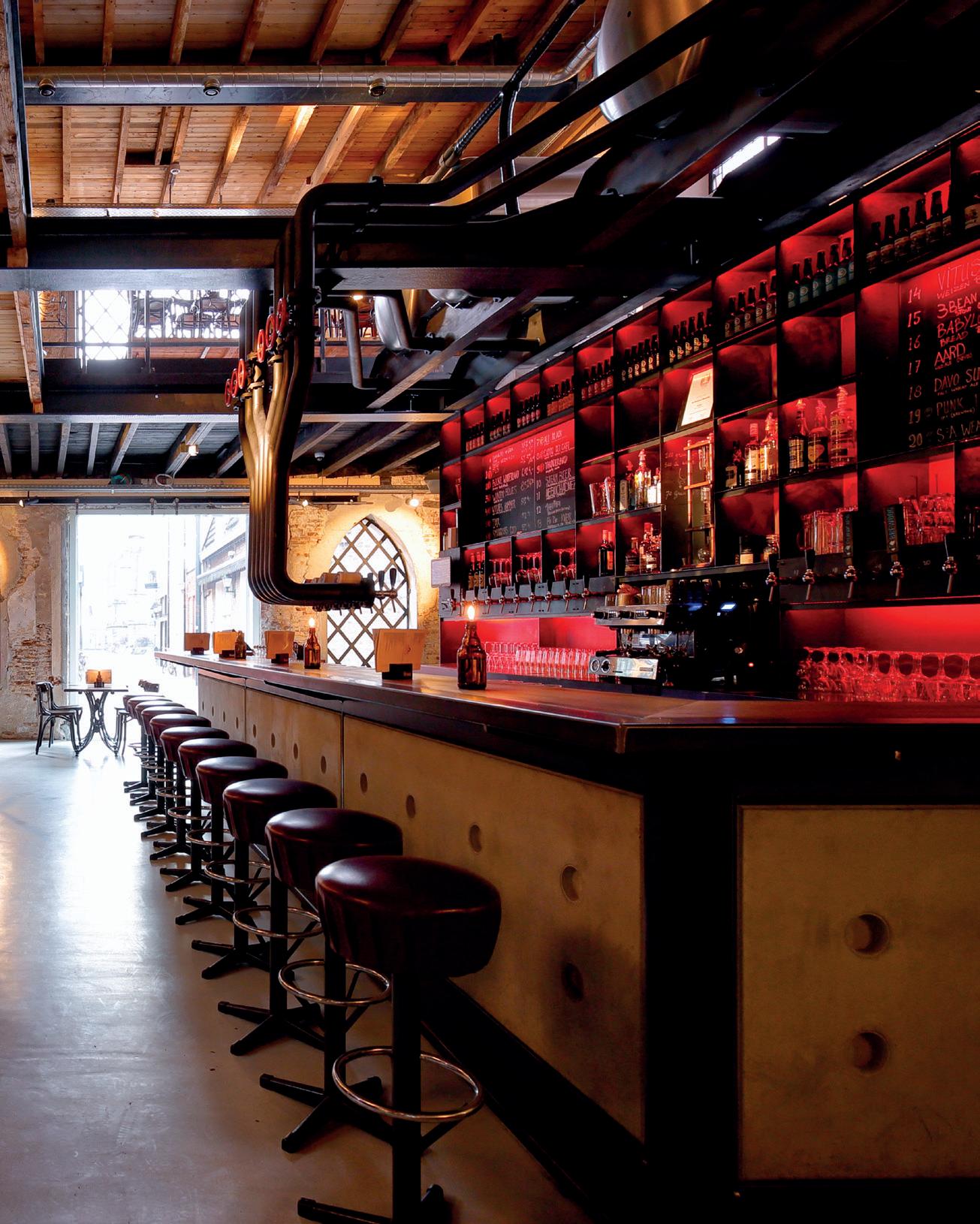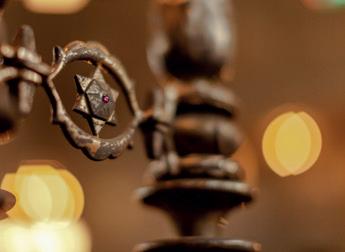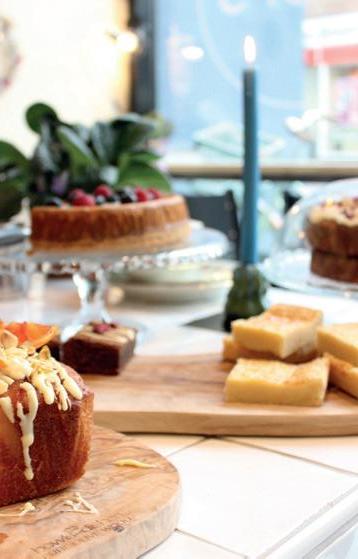// Textile route Enschede - Gronau: biking along red priest and white lady
OLD TRACKS AND RENEWED ENERGY IN AN OLD TURBINE HALL YOU WILL GO ON A JOURNEY THROUGH POP MUSIC AND WHERE ONCE THE LOOMS WERE RATTLING, YOU CAN MAKE YOUR OWN CREATIONS BY USING A LASER CUTTER OR A 3D-PRINTER. HOP ON YOUR BIKE AND DISCOVER HOW ENSCHEDE AND GRONAU ADDED A NEW TWIST TO THEIR SHARED TEXTILE HISTORY. He looks at him with dismay. Like Gerrit Jan Van Heek cannot cope with the fact that he is accompanied by a notorious troublemaker. The plaque showing the strict looking textile manufacturer reminds us of the time he and his family lived in the white villa behind the Grote Kerk. Nowadays you can buy chorizo croquettes and fried pointed peppers there. The portrait of the revolutionary Che Guevara is used as a sign for the tapas restaurant.
Van Heek and Guevara together on a façade: it is possible. It is a small example of how Enschede shook off its textile past, but has never forgotten about it. Wíll never be able to forget about it, because the influence of the textile industry on the city and its inhabitants was enormous.
INDUSTRIAL ACTIVITY
That influence crosses the border: textile manufacturers from Enschede were closely involved in the development of
6
the textile industry in the German city of Gronau. This shared history is shown when you get on your bike to follow the Grensoverschrijdende Textielfietsroute (textile hiking tour that crosses the border). The train station of Enschede is a suitable starting point: the construction of the railway to Münster and Dortmund via Gronau made sure the industrial activities on both sides of the border increased substantially from 1875 onwards.


















